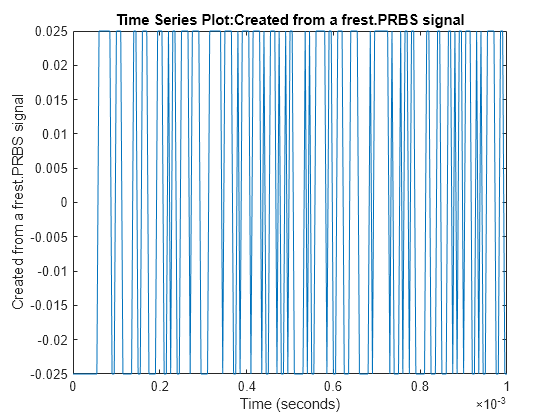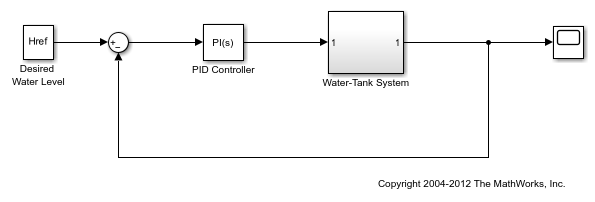frest.PRBS
Pseudorandom binary sequence input signal
Description
Use a frest.PRBS object to represent a pseudorandom binary
sequence (PRBS) input signal for frequency response estimation. A PRBS signal is a
deterministic signal that shifts between two values and has white-noise-like properties. A
PRBS signal is inherently periodic with a maximum period length of
2n–1, where n is the PRBS
order.
PRBS signals reduce total estimation time compared to using sinestream input signals, while producing comparable estimation results. PRBS signals are useful for estimating frequency responses for communications and power electronics systems with high-frequency switching components, such as pulse-width modulation (PWM) generators.
You can use a PRBS input signal for estimation at the command line or in the Model Linearizer app. The estimation algorithm injects the PRBS signal at the input point you specify for estimation and measures the response at the output point. For more information, see PRBS Input Signals.
To view a plot of your input signal, type plot(input). To create a
timeseries object for your input signal, use the generateTimeseries command.
Creation
Description
input = frest.PRBS(sys)sys. For instance, if you have an exact linearization of your
system, you can use it to initialize the parameters.
input = frest.PRBS(Name,Value)
Input Arguments
Properties
Object Functions
frestimate | Frequency response estimation of Simulink models |
generateTimeseries | Generate time-domain data for input signal |
frest.simCompare | Plot time-domain simulation of nonlinear and linear models |
frest.simView | Plot frequency response model in time- and frequency-domain |
getSimulationTime | Final time of simulation for frequency response estimation |
Examples
Alternative Functionality
Model Linearizer
In the Model Linearizer, to use a PRBS input signal for estimation, on the Estimation tab, select Input Signal > PRBS Pseudorandom Binary Sequence.

